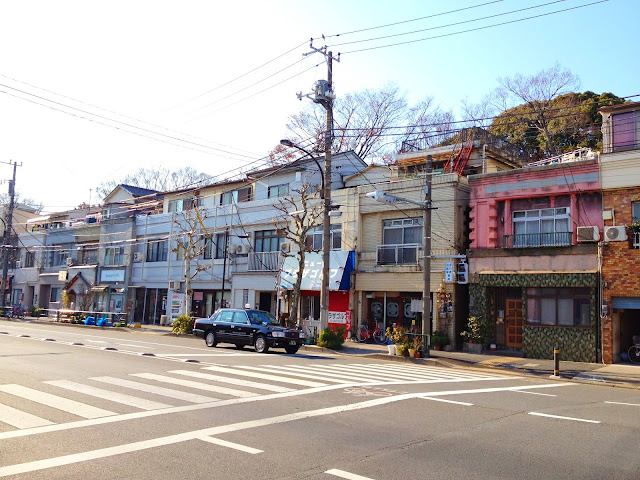 |
| Present view |
 |
| Painted by Hiroshige in 1856 - 1858 |
The problem is why here, Yatsukōji, Inside Sujikai Gate was a famous view. Yes, Kanda Myojin which was painted on the upper right area and Yanagihara bank which was painted in green with trees on the center were famous places in Edo period. But the title was not "Kanda Myojin" and/or "Yanagihara bank".
In fact, Edo Meisho Zue was also painted here, same title. So it was a fact that here was a famous place. But I can't understand. Is there any beautiful, and/or historic, something about seeds to be famous at Yatsukōji, Inside Sujikai Gate itself?
Finally I assume that that is width. Yatsukōji, Inside Sujikai Gate had the role of protection against fire like Ryogoku. So it was vacant land. On the other hand, in Edo period, Edo had 1 million population so that the town was very crowded. I think that Edo people could breath deeply only here.
(Japanese)
問題は、何故、ここが名所なのかということだ。確かに、誰もが知る、画面右上に描かれている神田明神や、画面中央を左上から右下に描かれている柳原堤が描かれてはいる。
(因みに、柳原堤の奥の赤い帯は神田川。何故、河なのに『赤』なのか。)
が、タイトルは、『筋違内八ツ小路』だ。神田明神でも柳原堤でもない。
事実、名所江戸百景より前に出版された、江戸名所図会でも、ここは名所とされている。だから、当時、ここは名所だったのだろう。だが、ここに、何か、名所足らしめるものがあるだろうか、筋違内八ツ小路自体に。
恐らく、それは、この広さだったのではなかろうか。両国広小路のように、火除け地の役割も持っていたので、ご覧のように広い空間があった。一方、当時、百万の人口を誇った江戸は、せまぜましくごみごみと込み合っていた。江戸の人々は、ここのような火除け地に来て、初めて、深く深呼吸できたのではないだろうか。
尚、写真のレンガだが、旧万世橋駅・昌平橋駅の明治時代の遺構。近代建築シリーズでじっくり取り上げる予定。
 |
| Map made in 1858 |
より大きな地図で 筋違内八ツ小路 を表示















































